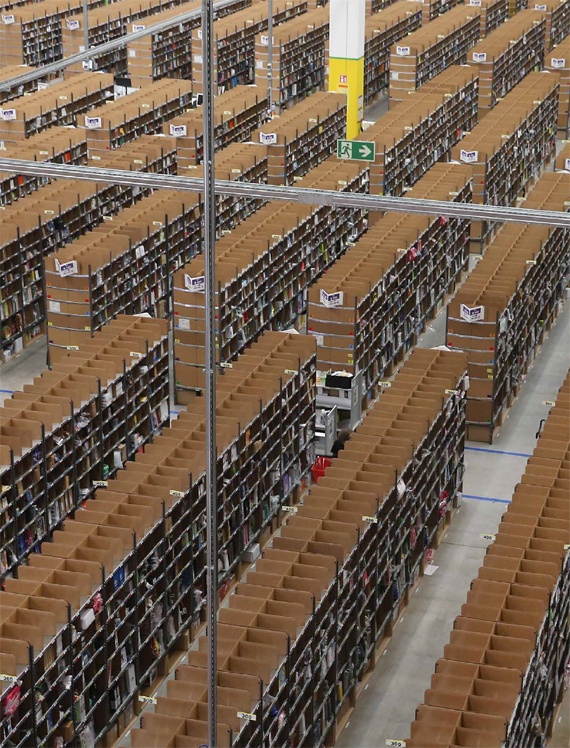Industrial automation and robotics technology have become indispensable tools for modern manufacturing and industrial production. Automation is revolutionizing the entire manufacturing sector, providing businesses with faster, precision-oriented solutions that enhance productivity while reducing costs. From automated assembly lines to robot-driven warehouse operations, automation transforms how companies create products and deliver value to their customers. In this post, Shane Braddick will explore the advantages of using robots and other forms of automation in various industries, along with emerging trends in the field of industrial engineering. Read on to get an insight into the impact of automating processes on global markets!
What Is Industrial Automation And Robotics, And How Does It Fit In With Manufacturing Processes
In today's advanced manufacturing environments, Industrial Automation and Robotics are integral players in production processes. So, what exactly are they? Industrial Automation refers to using control systems, such as computers or robots, to operate production equipment and complete tasks that human operators once carried out. On the other hand, robotics involves developing, manufacturing, and programming machines able to perform duties independently or with minimal human intervention. These two technologies, when combined, have revolutionized the way manufacturing processes are carried out. By improving precision, increasing efficiency, reducing the risk of workplace accidents, and speeding up production times, Industrial Automation and Robotics have undoubtedly become essential for any modern manufacturer.
The Benefits of Automation and Robotics for Manufacturers
Manufacturing has had its fair share of progress with the emergence of technological advancements such as automation and robotics. Integrating these technologies into manufacturing enables manufacturers to build products faster and with greater precision. Automation and robotics yield significant benefits to manufacturers, primarily regarding speed, efficiency, and cost-effectiveness. With automation and robotics doing much of the heavy lifting, manufacturers can produce more in a shorter timeframe with fewer resources - ultimately allowing their businesses to grow. This cutting-edge technology has undoubtedly disrupted the manufacturing industry for the better. As these advancements continue to evolve, exploring how else they can positively impact the industry is essential.
The Risks of Incorporating Industrial Automation and Robotics
As technology continues to advance, industries are incorporating more and more automation and robotics into their processes. While this may boost efficiency and productivity, it also comes with potential risks that must be considered. One of the main concerns is the potential for job loss among human workers who are being replaced by machines. Additionally, there are worries about the safety and reliability of automated systems and the ethical implications of giving machines so much control over different industries. Companies must weigh the benefits against the risks and ensure proper safeguards are in place to mitigate any negative impacts. As with any new technology, caution is critical to ensuring that automation and robotics are integrated responsibly and sustainably.
Recent Developments in Automated Manufacturing Technologies
The last few years have seen significant advancements in automated manufacturing technologies. These developments transform how we produce goods, making the process more efficient, cost-effective, and safe. The latest emerging technologies include Artificial Intelligence, Machine Learning, Big Data Analytics, and the Internet of Things (IoT). By leveraging these advanced tools, companies can optimize their production lines, reduce errors, and increase quality. Automated manufacturing technologies require less labor input, freeing employees from hazardous or repetitive tasks and improving overall job safety. These developments are set to revolutionize the manufacturing industry, and we can expect more improvement shortly.
An Overview of the Cost-Benefit Analysis of Automated Manufacturing Technologies
Automated manufacturing technologies have been making significant strides in the past few years, and the cost-benefit analysis of these systems is worth examining. These technologies aim to improve efficiency, reduce costs, and increase productivity by relying on automated processes that negate human intervention. By using software and robotics, manufacturers can operate with greater precision, consistency, and speed while reducing the likelihood of human error. The cost-benefit analysis of automated manufacturing technologies is crucial for companies seeking to replace traditional labor-intensive processes with modern, computerized solutions. By doing so, companies can save costs, improve efficiency, and boost their competitive edge in their respective markets. Therefore, it's essential to research and understand the benefits before making any significant investments.
How Manufacturers Can Prepare for the Adoption of Autonomous Manufacturing Technologies
Shane Braddick says as technology advances rapidly, industries worldwide face new challenges to keep up with the changes. Manufacturing is no different, and with the adoption of autonomous manufacturing technologies on the horizon, manufacturers must prepare for the inevitable shift. Preparing for these changes involves embracing new technologies, changing existing processes, and training employees to work with these advanced systems. Successful manufacturers will see the coming changes for what they are - opportunities for growth and success. With careful preparation, adapting new techniques and developing new strategies will become second nature, paving the way for unprecedented productivity and efficiency in the manufacturing industry.
Conclusion
In conclusion, manufacturers, especially those in the industrial sector, have more than enough reasons for embracing industrial automation and robotics technologies. Industrial automation and robotics provide increased productivity at a lower cost, enabling companies to produce their products faster and reduce overall human labor. With new technologies coming into play daily, regulators and industry practitioners must remain agile to ensure an optimal workflow with minimal disruptions throughout this process shift.


No comments yet